Configuring Backups in Plesk 12.5
Pre-Flight Check
- This article applies specifically to configuring backups in Plesk 12.5.30.
- We’ll be working from a Liquid Web server running Microsoft Windows Server 2012 R2, but these steps apply to any server running Plesk 12.5, regardless of operating system.
- You can use the links below to quickly jump to a specific section:
Configuring Backup Settings
- From Plesk’s Tools & Settings panel, locate the Tools & Resources menu and click on Backup Manager.

- Click the Settings tab to configure backup settings:
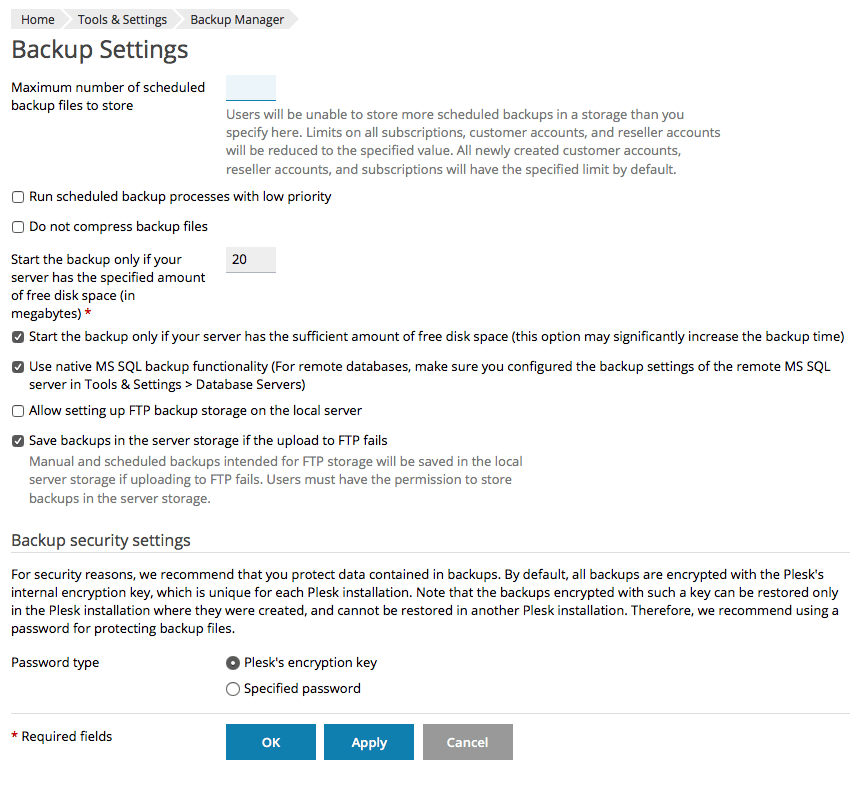 When configuring your backup settings, there are several items to which you will want to pay particular attention:
When configuring your backup settings, there are several items to which you will want to pay particular attention:
- Maximum number of scheduled backups to store: It is critically important that you consider both the total size of subscriptions and the server’s available disk space when determining how many backups to store. If you do not set a reasonable limit, you could cause the server to run out of disk space, affecting both server stability and service availability. Moreover, Plesk will continue to attempt to create backups even if there is no disk space available; in that event, any newly-created “backups” will be zero-k (empty) files, overwriting the oldest existing backup in turn until no viable backup files remain. As Plesk backups are not managed by Liquid Web, you will want to take care when configuring this setting.
Note: Please note that you can manually download backups from Plesk at any time. If you find that your available disk space is insufficient to retain the number of backups you wish to store, and you do not wish to download them for local storage, you always have the option to purchase additional storage (an additional drive or a Storm® Block Storage device, depending on your server type).
- Do not compress backup files: If you select this option, compression will be disabled and each backup file will take up the same amount of space on the server as the full account.
- Allow setting up personal FTP backup storage on the local server: This option allows users to configure backups for their Plesk accounts in their own FTP directories on the server. If enabled, this option will double the amount of disk space used upon creation of each backup, potentially causing the server out of free disk space. If you elect to activate this option, please adjust your backup retention accordingly.
- Password type: If you choose to encrypt the backups with Plesk’s encryption key (which is unique to each Plesk installation), you will not be able to restore the backups to any other server. Instead, it is recommended that you use the Specified password option to set a password; password-encrypted backups can be restored on any server.
- Maximum number of scheduled backups to store: It is critically important that you consider both the total size of subscriptions and the server’s available disk space when determining how many backups to store. If you do not set a reasonable limit, you could cause the server to run out of disk space, affecting both server stability and service availability. Moreover, Plesk will continue to attempt to create backups even if there is no disk space available; in that event, any newly-created “backups” will be zero-k (empty) files, overwriting the oldest existing backup in turn until no viable backup files remain. As Plesk backups are not managed by Liquid Web, you will want to take care when configuring this setting.
Manually Backing up the Entire Server
By clicking the Back Up button in Backup Manager, you can manually take a full or incremental backup of the server configuration or server configuration and content:
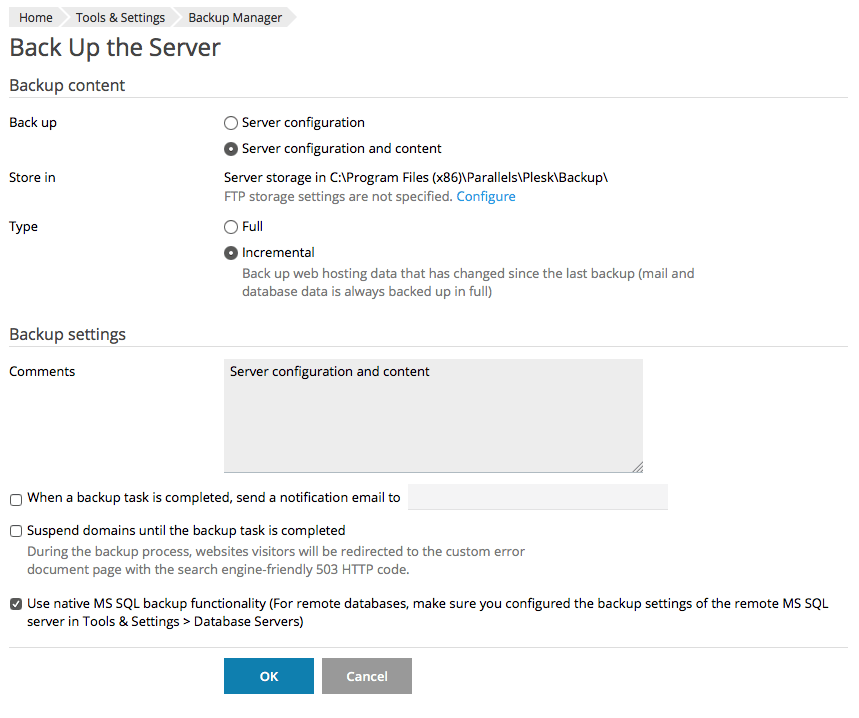
Scheduling Backups
From Backup Manager, click the Schedule button to set up automatic full or incremental backups of the domain configuration, mail configuration and content, and/or user files (including databases):
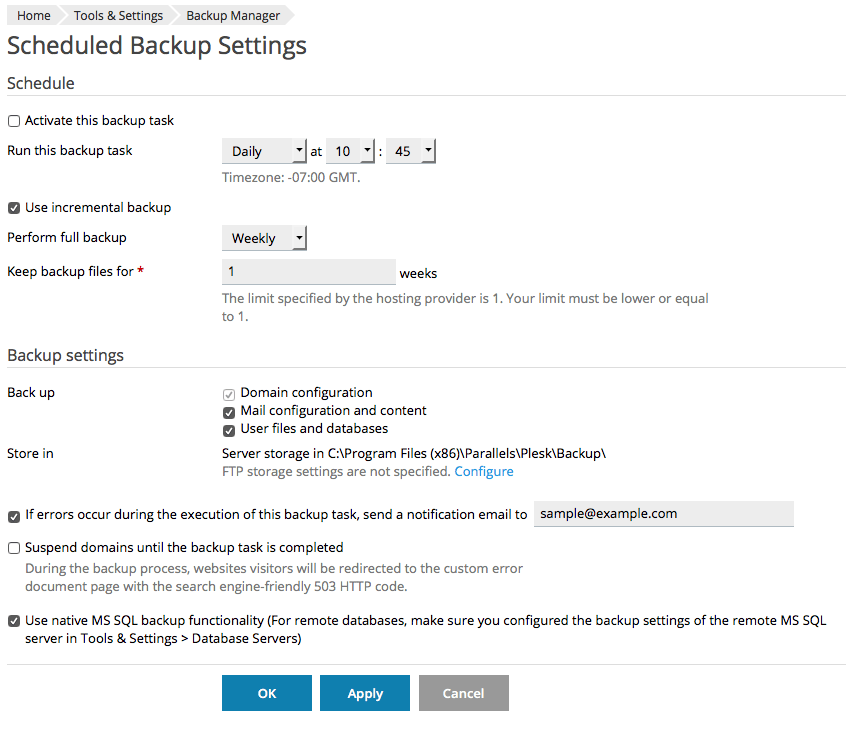
Restoring a Backup
- From Backup Manager, click the date of an available backup to begin the process of restoring from the backup. If the backup is not stored on the server, you can click the Upload button to upload it to the list.
- On the backup restoration page, use the Type of object to restore select menu to choose whether you want to restore the entire subscription or only a part, such as the mail account, database, or sites.
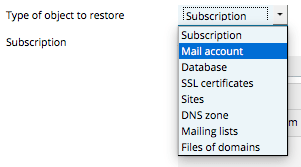
- The restoration will begin once you click the Restore button.
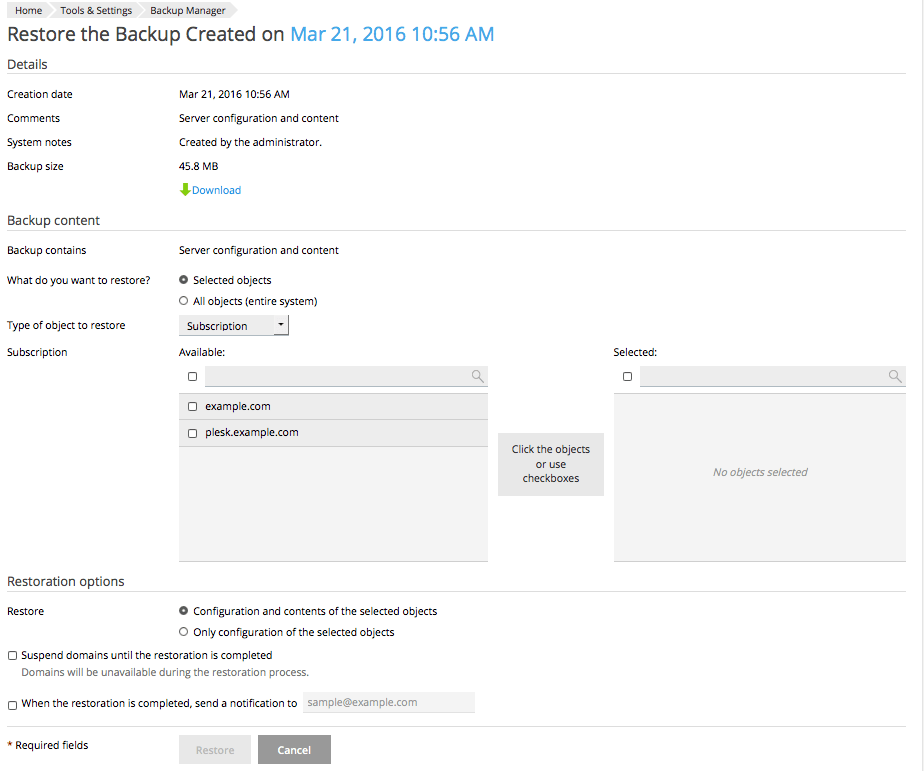
Related Articles:

About the Author: J. Mays
As a previous contributor, JMays shares his insight with our Knowledge Base center. In our Knowledge Base, you'll be able to find how-to articles on Ubuntu, CentOS, Fedora and much more!
Our Sales and Support teams are available 24 hours by phone or e-mail to assist.
Latest Articles
How to use kill commands in Linux
Read ArticleChange cPanel password from WebHost Manager (WHM)
Read ArticleChange cPanel password from WebHost Manager (WHM)
Read ArticleChange cPanel password from WebHost Manager (WHM)
Read ArticleChange the root password in WebHost Manager (WHM)
Read Article


